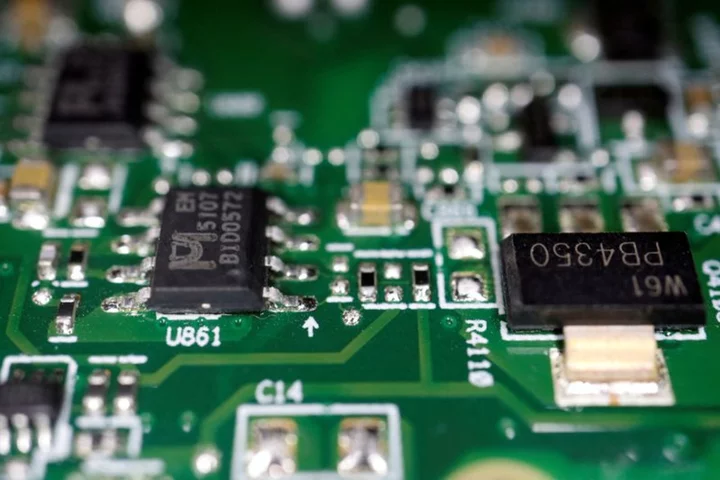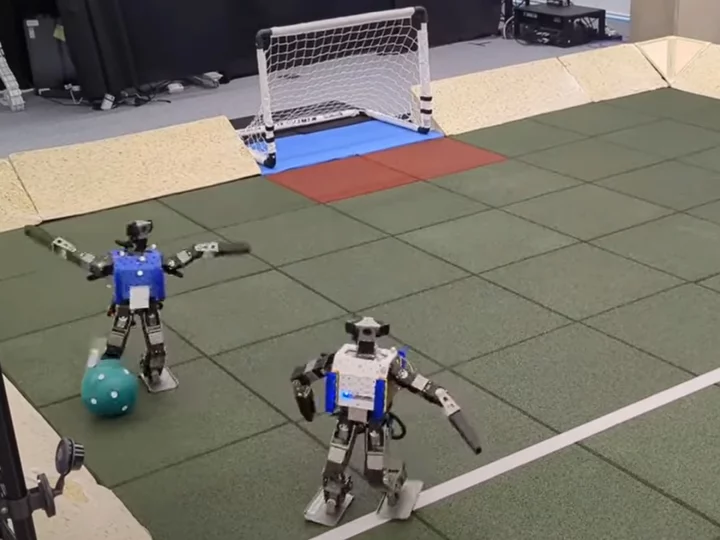
ChatGPT creators try to use artificial intelligence to explain itself – and come across major problems
ChatGPT’s creators have attempted to get the system to explain itself. They found that while they had some success, they ran into some issues – including the fact that artificial intelligence may be using concepts that humans do not have named for, or understanding of. Researchers at OpenAI, which developed ChatGPT, used the most recent version of its model known as GPT-4 to try and explain the behaviour of GPT-2, an earlier version. It is an attempt to overcome the so-called black box problem with large language models such as GPT. While we have a relatively good understanding of what goes into and comes out of such systems, the actual work that goes on inside remains largely mysterious. That is not only a problem because it makes things difficult for researchers. It also means that there is little way of knowing what biases might be involved in the system, or if it is providing false information to people using it, since there is no way of knowing how it came to the conclusions it did. Engineers and scientists have aimed to resolve this problem with “interpretability research”, which seeks find ways to look inside the model itself and better understand what is going on. That has often required looking at the “neutrons” that make up such a model: just like in the human brain, an AI system is made up of a host of so-called neutrons that represent parts of the data it uses. Finding those is difficult, however, since humans have had to pick through the neurons and manually inspect them to find out what they represent. But some systems have hundreds of billions of parameters and so actually getting through them all with people is impossible. Now, researchers at OpenAI have looked to use GPT-4 to automate that process, in an attempt to more quickly pick through the behaviour. They did so by attempting to create an automated process that would allow the system to provide natural language explanations of the neuron’s behaviour – and apply that to another, earlier language model. That worked in three steps: looking at the neuron in GPT-2 and having GPT-4 try and explain it, then simulating what that neuron would, and finally scoring that explanation by comparing how the simulated activation worked with the real one. Most of those explanations went badly, and GPT-4 scored itself poorly. But researchers said that they hoped the experiment showed that it would be possible to use the AI technology to explain itself, with further work. The creators came up against a range of “limitations”, however, that mean the system as it exists now is not as good as humans at explaining the behaviour. Part of the problem may be that explaining how the system is working in normal language is impossible – because the system may be using individual concepts that humans cannot name. “We focused on short natural language explanations, but neurons may have very complex behavior that is impossible to describe succinctly,” the authors write. “For example, neurons could be highly polysemantic (representing many distinct concepts) or could represent single concepts that humans don’t understand or have words for.” It also runs into problems because it is focused on specifically what each neuron does individually, and not how that might affect things later on in the text. Similarly, it can explain specific behaviour but not what mechanism is producing that behaviour, and so might spot The system also uses a lot of computing power, the researchers note. Read More Google to unveil major new AI AI robots figure out how to play football in shambolic footage White House asks hackers to break ChatGPT White House reveals plan to ‘protect’ citizens from danger of AI DeepMind boss says human-level AI is just a few years away Regulator to probe use of artificial intelligence such as ChatGPT
1970-01-01 08:00

Creepy WhatsApp update leads to fears that users are being listened to through their phone
Concerning messages showing on people’s phones have led to fears that they are being listened to. The app appears to be attempting to access the microphone within people’s phones, when users are asleep, according to the privacy menus within Google’s Android operating system. But WhatsApp said that it believes the issue is a bug within Android, and has stated categorically that the app would not access user’s microphones without their permission. The problem was raised by Twitter engineer Foad Dabiri, who shared a tweet which included a screenshot of a page in Android that shows when a given app accesses the microphone. He noted that it showed a range of attempts to do so, even when he had been asleep. The post was further amplified by Mr Dabiri’s boss, Elon Musk, who shared the tweet and claimed that “WhatsApp cannot be trusted”. Mr Musk’s post followed a range of other criticisms of Mark Zuckerberg, largely for political reasons, and Twitter also competes with WhatsApp with its direct messaging platform. In another post, Mr Musk pointed to the fact that WhatsApp is “owned by Meta/Facebook”, and claimed that WhatsApp’s former owners had left the parent company “in disgust”. “What they learned about Facebook and changes to WhatsApp obviously disturbed them greatly,” he claimed. Other users also reported seeing the same problem, on Twitter and Reddit, even before Mr Dabiri brought it to widespread attention. The screen can be seen within Google’s “Privacy Dashboard”, which is found within the Settings app and collects information about how personal data is being used by apps on a phone. Some claimed that page even showed WhatsApp accessing their camera. Others said that the microphone appeared to be getting accessed every few minutes. The same privacy dashboard can be used to turn off the microphone for any apps that users may be concerned about. But that could lead to certain features not working, such as voice notes or calls on WhatsApp. WhatsApp said that it believed the screen was showing the microphone being accessed as a result of a “bug”. It said that it was showing the wrong information in Google’s privacy dashboard screen and that it had been in touch with Google to fix it. “Users have full control over their mic settings,” WhatsApp posted in response to Mr Dabiri’s tweet. “Once granted permission, WhatsApp only accesses the mic when a user is making a call or recording a voice note or video – and even then, these communications are protected by end-to-end encryption so WhatsApp cannot hear them.” Meta-owned apps have long been plagued by fears that they are accessing the microphones of users. For years, users have accused Facebook and Instagram of listening to them to collect data and show them more relevant sponsored ads, which Meta has always firmly denied. Many experts have argued that the sometimes uncannily accurate sponsored posts are simply the result of the app’s advertising tools accurately profiling users, without needing to listen to them. Read More WhatsApp just fixed two of its most glaring quirks Google to unveil major new AI Quantum computer discovers bizarre particle that remembers its past Google to unveil major new AI Quantum computer discovers bizarre particle that remembers its past Why is Elon Musk purging Twitter accounts?
1970-01-01 08:00

Google I/O 2023 live: Major AI news expected alongside new Pixel devices
Google is set to unveil its latest artificial intelligence offerings at its annual developers conference on Wednesday, alongside new products ranging from Pixel phones to the Android 14 operating system. Google I/O 2023 will offer Alphabet the chance to show what its massive investments into AI have delivered, as it seeks to take on OpenAI’s hugely popular ChatGPT chatbot. Integration of its Bard AI in to its Maps, Gmail and search is expected, while various leaks have hinted that the company will also launch a large language model (LLM) called PaLM 2, capable of operating in more than 100 languages. This AI tool is rumoured to be able to pass exams in everything from computer coding and mathematics, to creative writing and critical thinking. A live stream of the keynote will be available when it begins at 10am local time (6pm BST), which you can watch right here. Until then, you can follow all the latest news, updates and analysis in our build-up coverage below.
1970-01-01 08:00

Cisco to begin manufacturing from India in diversification move
NEW DELHI (Reuters) -Cisco Systems will begin manufacturing from India in a move to diversify its global supply chain, Chief
1970-01-01 08:00

Twitter is adding calls and encrypted messaging
Twitter is adding encrypted messaging to the platform Wednesday, and calls will follow shortly, CEO Elon Musk tweeted late Tuesday.
1970-01-01 08:00

Austria to join countries banning TikTok from government phones
VIENNA Austria will join the growing list of countries banning Chinese-owned video-sharing app TikTok from government employees' work
1970-01-01 08:00

We asked ChatGPT to write a Eurovision song for the contest
The Eurovision song contest takes place this weekend in Liverpool after Ukraine won last year. Kalush Orchestra came out on top in 2022 with a huge show of support for their song 'Stefania' - and have since handed over hosting duties to the UK because of the ongoing war with Russia. Speaking of the UK, Mae Muller has been selected to represent the country and will perform her song 'I Wrote A Song' at the final. Sign up to our free Indy100 weekly newsletter With glory and hosting duties to play for, then, choosing a good song is very important. So who (or what) better to turn to than ChatGPT, everyone's favourite controversial AI system, to write a song for us? That is exactly what we did and here's what the software came up with: Verse 1: Under the bright lights, We stand here tonight, In this moment we unite, With hearts open wide. Chorus: We dance to the beat of our own drum, We sing with passion until the night is done, We are the stars that light up the sky, We are the ones who never say die. Verse 2: We come from every corner, From the north to the south, We share the same desire, To let our voices out. Chorus: We dance to the beat of our own drum, We sing with passion until the night is done, We are the stars that light up the sky, We are the ones who never say die. Bridge: Let's forget about the past, Let's live in the moment that will last, Together we'll make history, And show the world what we can be. Chorus: We dance to the beat of our own drum, We sing with passion until the night is done, We are the stars that light up the sky, We are the ones who never say die. Outro: So let's keep dancing, And keep singing our song, We'll show the world who we are, And prove that we belong. So there you have it - ChatGPT could become the next best singer. After all, we reckon this song is probably better than half the actual entries we will endure this weekend. Have your say in our news democracy. Click the upvote icon at the top of the page to help raise this article through the indy100 rankings.
1970-01-01 08:00

India renews process for $10 billion semiconductor incentive scheme - Bloomberg News
India plans to reopen the application process for $10 billion in incentives and assistance intended to encourage the
1970-01-01 08:00

Future space missions could use all-female crews because they are more ‘efficient’
Future space missions might use all-female crews because they are more “efficient”, a new study has suggested. Many space agencies around the world are already preparing for the first human trips to Mars and perhaps other planets. But those trips will be incredibly resource-intensive, with the food and other material required to support a crew over years being an important consideration. One way to minimise that demand on resources would be to send all-female crews, a new study conducted by the European Space Agency suggests. It found that female astronauts would be likely to need less water to stay hydrated, expend less energy, need less oxygen and carbon dioxide and produce less heat than their male counterparts. That in turn would require less space to store the equipment needed to allow those astronauts to live, and therefore make the journey theoretically easier for engineers. The exact difference between a male and female crew would depend on the stature and other details of the astronauts that were chosen. But in all situations, the all-female crew were found to use less energy. That was because they are lighter than their male counterparts, and tend to use less oxygen when they are exercising. The difference remained true even when the astronauts were modelled as if they were engaging in the kind of exercise that astronauts have done on the International Space Station, which is required to ensure they stay fit and healthy without the usual gravity on Earth. The fact that women also tend to be smaller would be another advantage the scientists note, since it would mean that engineers would be able to build them smaller space habitat modules. “There may be a number of operational advantages to all-female crews during future human space exploration missions,” the team conclude in a new paper. The work was theoretical and used already published data on female astronauts and physiological research. The research is published in a new paper, ‘Effects of body size and countermeasure exercise on estimates of life support resources during all-female crewed exploration missions’, in Scientific Reports. Read More Why is Elon Musk purging Twitter accounts? Apple finally launches two professional apps on the iPad AI robots figure out how to play football in shambolic footage
1970-01-01 08:00

Twitter: Why is Elon Musk purging inactive accounts?
Elon Musk is “purging” old accounts on Twitter, he has said, in yet another controversial change to the service. He said that accounts with “no activity at all for several years” would be removed from the platform. He noted that the result is likely to be a decrease in people’s follower account. But the move has already led to widespread criticism from users who say that it could remove important personal and social history from the site, as well as being yet another ill-explained move from Mr Musk. Much remains unclear about the plan. Mr Musk did not clarify what would mark an active account, for instance – whether it would need its owner to sign in, or if they might have to post – and gave no information about the timescale of the “purging”. But here’s everything we do know about what will be happening to those old Twitter accounts. Why would Elon Musk do this? Mr Musk suggested that the focus is on “free[ing] up abandoned handles”. Many Twitter users who joined the site in its early years were able to claim much-desired usernames – such as those with only three characters – and have not used them since. Even before the purge, people have gone to considerable lengths in order to get those accounts. Those holding particularly valuable handles have spoken about being subject both to hacking attacks and considerable monetary offers to get access to them. It also has the benefit of giving an indication that staying as an active member of Twitter is valuable – or, at least, that it might be problematic not to use an account at all. That in turn could mean that more people log in to more Twitter accounts more regularly, which is a key metric at advertising-driven companies such as Twitter. Why is it being criticised? Many users have suggested that getting rid of those old, inactive accounts will mean deleting history. That might mean deleting accounts that were run by dead loved ones, or simply removing posts that have had a substantial impact on the world. In response, Mr Musk has indicated that the accounts will be “archived”, in a tweet replying to one such critic. He did not give any information about what this might mean, but other comments suggested that the posts may stay available on Twitter but not at the old handle. Many also suggested that the plan had not been fully thought through when it was announced, noting that Mr Musk had given no information to those who might have accounts removed, such as those that use them only to follow developments on Twitter and not post their own tweets. Read More Elon Musk threatens to reassign inactive Twitter accounts Elon Musk says Twitter will let media outlets charge users per article view Jack Dorsey says Twitter ‘went south’ after its sale to Elon Musk Bluesky might be the hottest and most controversial app in the world Apple finally launches two professional apps on the iPad AI robots figure out how to play football in shambolic footage
1970-01-01 08:00

Apple launches Final Cut Pro and Logic Pro on iPad, finally bringing professional apps to tablets
Apple will bring Final Cut Pro and Logic Pro to the iPad, answering questions about the future of its high-powered tablets. The professional video and music editing apps have been remade for Apple’s tablets, with new touch interfaces and additional features added from the Mac counterpart. Apple has been making the iPad Pro for years, with the first released in 2015. Recent models have brought them in line with Apple’s laptops, using the same chips for faster performance. But at the same time, Apple has been relatively slow in adding professional apps to the platform that can make use of that computing capability. That had led some to wonder whether Apple was truly committed to its iPads being a professional platform. Now Apple has put its two main professional and creative apps onto the platform, and they will arrive later this month. “We’re excited to introduce Final Cut Pro and Logic Pro for iPad, allowing creators to unleash their creativity in new ways and in even more places,” said Bob Borchers, Apple’s vice president of worldwide product marketing, in a statement. “With a powerful set of intuitive tools designed for the portability, performance, and touch-first interface of iPad, Final Cut Pro and Logic Pro deliver the ultimate mobile studio.” The new versions of the app are largely similar to their Mac counterparts. They include the same basic design and similar functionality. The updates do however add some tools within the iPad version, such as a new sound browser in Logic Pro. And they also include new options that are built specifically for the tablet, such as support for the Apple Pencil. Customers will have to pay for the iPad versions of the app separately, even if they own the desktop one, with each app costing £4.99 per month or £49 per year. Final Cut Pro requires an M1 chip or later, and Logic Pro needs an A12 chip or later, and the apps must be updated to the latest operating system. Both of the apps will be available from 23 May. Apple’s announcement is unusual in that it comes just a month before its big software event, the Worldwide Developers Conference, which is held at the beginning of June. Apple usually announces new updates to its own apps at that event. Read More Apple announces shock results Tim Cook reveals his thoughts on AI – and Apple’s plans to use it Google gets rid of passwords in major new update
1970-01-01 08:00

AI robots figure out how to play football in shambolic footage
Robots fitted with AI developed by Google’s DeepMind have figured out how to play football. The miniature humanoid robots, which are about knee height, were able to make tackles, score goals and easily recover from falls when tripped. In order to learn how to play, AI researchers first used DeepMind’s state-of-the-art MuJoCo physics engine to train virtual versions of the robots in decades of match simulations. The simulated robots were rewarded if their movements led to improved performance, such as winning the ball from an opponent or scoring a goal. Once they were sufficiently capable of performing the basic skills, DeepMind researchers then transferred the AI into real-life versions of the bipedal bots, who were able to play one-on-one games of football against each other with no additional training required. “The trained soccer players exhibit robust and dynamic movement skills, such as rapid fall recovery, walking, turning, kicking and more,” DeepMind noted in a blog post. “The agents also developed a basic strategic understanding of the game, and learned, for instance, to anticipate ball movements and to block opponent shots. “Although the robots are inherently fragile, minor hardware modifications, together with basic regularisation of the behaviour during training led the robots to learn safe and effective movements while still performing in a dynamic and agile way.” A paper detailing the research, titled ‘Learning agile soccer skills for a bipedal robot with deep reinforcement learning’, is currently under peer-review. Previous DeepMind research on football-playing AI has used different team set ups, increasing the number of players in order to teach simulated humanoids how to work as a team. The researchers say the work will not only advance coordination between AI systems, but also offer new pathways towards building artificial general intelligence (AGI) that is of an equivalent or superiour level to humans. Read More 10 ways AI will change the world – from curing cancer to wiping out humanity DeepMind boss says human-level AI is just a few years away Apple finally launches two professional apps on the iPad UK-based tech company claims quantum computing ‘breakthrough’
1970-01-01 08:00
